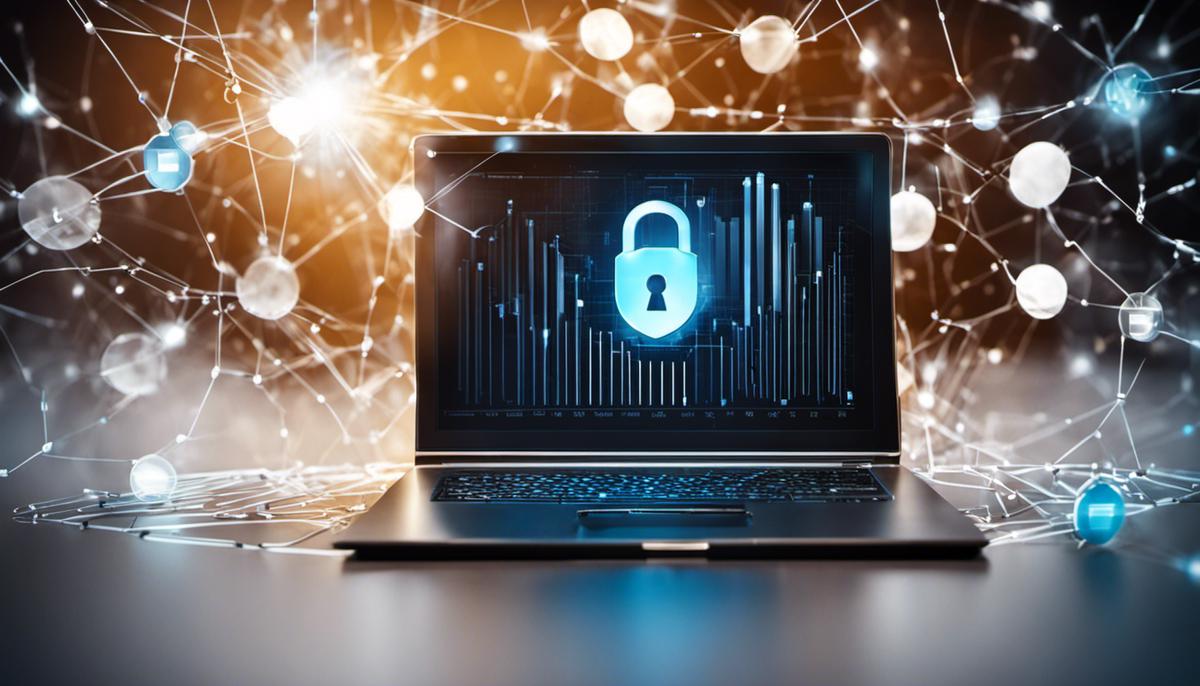What is PII in cyber security? The rapid advancement of technology in the 21st century has brought about a sea change in how personal data is stored and utilized. In the intertwined realms of technology and privacy, Personally Identifiable Information (PII) has emerged as a critical point of concern. Tailored marketing strategies and personalized recommendations hinge on the collection and analysis of PII. However, miscreants of cybersecurity exploit this same information to wreak havoc, spotlighting the urgent necessity for robust security mechanisms. Cybersecurity, thus, must be roped in to safeguard PII and ensure that the overtures of technology can be enjoyed responsibly. This article aims to shed light on the nuances of PII in cybersecurity, the governing laws and regulations, techniques to safeguard PII, and instances of their breaches in the past.
Defining PII and its Relevance to Cyber Security
The Imperative Role of Personally Identifiable Information (PII) in Cyber Security
Walk with us into the futuristic world of Cyber Security, a space where red alerts are not about fiery volcanoes or tornadoes in the horizon but stem from a labyrinth of codes and bytes that potentially hold the power to disrupt humanity in unprecedented ways. At the crux of this thrilling, tech-heavy epoch is a term often encountered yet rarely fully understood – Personally Identifiable Information or PII.
PII is an integral cog in the understanding of Cyber Security, akin to an essence that gives meaning to the vast cyber cosmos. Take a moment to think: what is PII? In its simplest form, PII is any data that could potentially identify a specific individual. This spans from your name and social security number to even your IP address and cookie data.
Why, you might wonder, is PII so pivotal within the realm of Cyber Security? To grasp this, it’s imperative to acknowledge the colossal value data holds in this digital age – a sought-after treasure by cyber ill-doers. Every piece of personal information gives miscreants a foot in the door to your identity, culminating in the dreaded identity theft, financial losses, and a plethora of equally daunting consequences.
Perhaps the most significant value of understanding PII is in the realm of prevention. By knowing what constitutes our PII, we erect the first line of defense in guarding ourselves against potential cyber threats.
Let’s turn our focus to the potent Cyber Security tool – VPN. A VPN, or Virtual Private Network, can help cloak your IP address, protecting your precious PII from prying eyes. Acting as a digital invisibility cloak, the VPN masks your online breadcrumbs, making it harder for hackers to connect these pieces to your real-world identity.
But that’s not all! Regular updating of software is another shield in the tech armory to protect PII. Remember, outdated software is like worn-out footwear, it might still do the job, but it exposes you to unwanted risks. New updates patch known vulnerabilities that malicious entities could exploit to get their hands on your PII.
Moreover, a culture of awareness and vigilance towards the sight of phishing scams is another safeguard to prevent PII-related cyber breaches. Asking oneself, “Does this email from my bank look suspicious?” could be the difference between safe data and a breached identity.
In conclusion, PII is not just a piece of your identity in the cyber world; it’s the key to your digital home. And the way to secure this key? Solid Cyber Security measures that prioritize shielding Personally Identifiable Information. In this era of proliferating cyber threats, understanding and protecting our PII shines as the silver lining, thwarting pitfalls and empowering us to navigate safely through the exciting digital future.

Understanding the Laws and Regulations Concerning PII
The criticality of compliance with laws and regulations designed to safeguard PII (Personally Identifiable Information) in a business setting can’t be overemphasized. Amidst a landscape dominated by unsettling increases in data breaches, the ability to navigate this complex regulatory atmosphere has become crucial not merely as an act of regulatory compliance but as an essential strategy to counter cybersecurity threats and build consumer trust.
Legislations like the General Data Protection Regulation (GDPR) in the European Union, California’s Consumer Privacy Act (CCPA), and the Health Insurance Portability and Accountability Act (HIPAA) in the United States have taken center stage. These laws are instrumental in providing an effective defense against misappropriation of PII, and violating them could result in severe penalties financial and reputational losses for businesses.
On the ground rule, these regulations dictate how a business must handle, store, and protect PII – ranging from names, social security numbers, credit card details, and healthcare records to digital data like IP addresses and geolocation. They lay out protocols for gaining consent before data collection, notifying customers about fully disclosed data breaches, and giving them the right to access or delete their stored data – thereby enshrining the principle of transparency and user control in PII handling processes.
For businesses, adhering to these regulations not only mitigates the risk of legal repercussions but it also builds trust and credibility with customers. Needless to say, in an age where data often feels quite unsafe, a brand that can convincingly assure its customers about data protection will have a competitive edge.
Adopting robust cybersecurity technologies like encryption, pseudonymization, and controlled access can greatly contribute to PII protection. Such technology should align with the regulations’ standards, offering a comprehensive audit trail and proving demonstrable compliance.
However, technology adoption alone, as critical as it is, does not suffice. A deep-rooted cultural shift within businesses is required – one that treats regulatory compliance not merely as a legal obligation but as business-as-usual. It is absolutely essential for businesses to be proactive rather than reactive towards cybersecurity threats and regulatory requirements.
Regulatory compliance, in essence, is an investment. An investment towards a trustworthy brand, secure digital ecosystem, consumer confidence, and a future-proof operation. As the technology landscape evolves, these laws and regulations will continue to mold and adapt. The businesses that keep pace with this evolution embedding the regulatory requirements within their operational frameworks, will undeniably lead tomorrow’s digital era, where PII protection will be the customer trust currency.

Best Practices for Protecting PII
Diving deeper into tech-based solutions for PII protection, multi-factor authentication (MFA) is a critical tool for strengthening defenses. Going beyond the usual username and password, MFA demands additional proof of identity that significantly reduces potential unauthorized access. These could come in the form of SMS codes, biometric data, or security questions. 2FA, two-factor authentication, involves a subset of this approach using two identification methods. The use of this technology is paramount in preventing breaches and ensuring PII remains safe.
Additionally, encryption, the process of converting data into a code to prevent unauthorized access, is another essential technology tool. Strong encryption algorithms make it extremely challenging for cybercriminals to decipher PII without the cryptographic key. Secure sockets layer (SSL) and transport layer security (TLS) are commonly used methods to secure the transmission of PII between applications and servers.
Furthermore, data masking — substitution, shuffling, or encryption to hide original data with modified content — helps conceal PII from unnecessary viewing while maintaining its usability. It is handy during development and testing where data needs to be shared but not necessarily in its most sensitive form.
For procedural solutions, adopting a zero-trust architecture could be valuable. ‘Never trusting, always verifying’ characterizes this approach. In this model, every single access request is fully authenticated, authorized, and encrypted before action, regardless of its location in the network.
Policies and procedures are integral to PII protection. Businesses should champion clear data protocols, including how data is created, managed, used, stored, and destroyed. A well-defined Data Classification Policy focusing on categorizing and labeling data based on its sensitivity level can be beneficial.
Let’s not overlook the contribution of employee training to PII protection. Comprehensive and consistent cybersecurity awareness programs can empower individuals to recognize potential threats and act appropriately.
Moreover, incident response plans and communication strategies are pivotal in the event of a breach. A well-prepared organization can ensure quicker remediation, regulatory compliance during breach notification, and restore customer trust.
In conclusion, as technology makes leaps and bounds, so does the sophistication of cybercrime. Harnessing these procedural and tech-based methods are vital to safeguard PII and stay steps ahead in the security game. After all, it’s not just about protecting data; it’s about retaining credibility and trust in an increasingly digital world.

Case-Studies of PII Breaches and Lessons Learned
Delving deep into past occurrences of PII breaches can provide critical context and pave the way for learning and prevention. An exploration of high-profile data breaches reveals common patterns, potential vulnerabilities, and key takeaways for enterprises committed to securing PII.
Equifax, the credit reporting giant, fell victim to one of the most subversive PII breaches in history in 2017. The exploitation of a web application vulnerability enabled hackers to compromise the PII of 143 million people. Lessons from the Equifax incident underscore the urgency of patching vulnerabilities. Furthermore, the reliance on single-factor authentication was a notable weak point, reinforcing the superiority of MFA and 2FA in securing customer data.
In 2013, Yahoo experienced the damaging ripple effects of a similar breach that compromised the data of all 3 billion user accounts. The breach, rooted in outdated, easily broken encryption, exacerbated Yahoo’s lingering reputation damage. The revealing takeaway calls attention to the importance of strong passwords and present-day encryption methodologies.
Target, a well-known retail corporation, was the target (pun intended!) of a PII breach in 2014. The breach, facilitated through the exploitation of a third-party HVAC vendor’s network credentials, exposed the payment card data of 40 million customers. This inordinately high-profile case triggers dialogue around the far-reaching implications of third-party vendor management and the consequential responsibility companies shoulder in securing PII.
In 2015, Anthem, a leading health insurance provider, suffered a hack resulting in the exposure of PII for nearly 78.8 million insurers. The breach laid bare the critical importance of a zero-trust architecture — an ideological shift in enterprise security strategy where no user, whether inside or outside the organization, is inherently trusted.
In conclusion, curating a robust, proactive cybersecurity stance demands continuous learning from the past. No security measure is foolproof, and evolving threat landscapes necessitate adaptive, agile responses. Awareness, vigilance, and adherence to best practices, coupled with innovative technologies and evolving regulations, form the bulwarks of PII protection. Understanding and acknowledging the pitfalls and triumphs in the complicated history of data security speaks volumes about our readiness to tackle the cybersecurity challenges of the future.

Through a comprehensive dissection of PII, the legalities binding it, protective measures, and precedent instances of breaches, we comprehended cybersecurity from an indispensable perspective. The ever-evolving digital landscape necessitates a continuous adaptation and reinforcement of cybersecurity measures, particularly those guarding PII. Breaches of PII not only result in financial damages but also erode the trust of individuals in the digital space, the dents of which are hard to repair. Hence, the vitality of stringent cybersecurity measures, comprehensive data protection laws, and a culture of vigilance cannot be overstressed. As we move forward in these technologically advanced times, these understandings and practices will be our armor against the dark underbelly of data breaches and cybercrimes.

